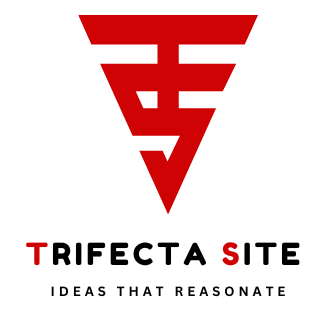In the ever-evolving world of cryptocurrency,Ecryptobit.com Ethereum has emerged as a cornerstone of innovation and decentralization. As the second-largest cryptocurrency by market capitalization, Ethereum has revolutionized the way we think about blockchain technology, smart contracts, and decentralized applications (dApps). In this article, we will explore the intricacies of Ethereum, its relationship with Ecryptobit.com, and how it is shaping the future of the crypto world. Whether you’re a seasoned crypto enthusiast or a newcomer, this guide will provide you with valuable insights into Ecryptobit.com Ethereum ecosystem.
Table of Contents
What is Ethereum?
The Birth of Ethereum
Ethereum was proposed in late 2013 by Vitalik Buterin, a young programmer and cryptocurrency researcher. Buterin envisioned a platform that would go beyond the capabilities of Bitcoin, offering a more versatile and programmable blockchain. In 2015, Ethereum was officially launched, introducing the world to smart contracts and decentralized applications.
Ethereum vs. Bitcoin
While Bitcoin is primarily a digital currency, Ethereum is a decentralized platform that enables developers to build and deploy smart contracts and dApps. Ethereum’s native cryptocurrency, Ether (ETH), is used to facilitate transactions and incentivize network participants. Unlike Bitcoin’s proof-of-work (PoW) consensus mechanism, Ethereum is transitioning to a proof-of-stake (PoS) model, which is more energy-efficient and scalable.
The Role of Ecryptobit.com in the Ethereum Ecosystem
What is Ecryptobit.com Ethereum?
Ecryptobit.com is a leading platform that provides users with comprehensive information, tools, and resources related to Ethereum and other cryptocurrencies. The platform offers a wide range of services, including wallet management, trading guides, and market analysis, making it an invaluable resource for both novice and experienced users.
How Ecryptobit.com Ethereum Supports Users
Ecryptobit.com plays a crucial role in the Ethereum ecosystem by offering:
- Educational Resources: Ecryptobit.com Ethereum provides in-depth articles, tutorials, and guides to help users understand Ethereum’s technology and its potential applications.
- Wallet Management: The platform offers secure wallet solutions for storing and managing ETH and other cryptocurrencies.
- Market Analysis: Ecryptobit.com provides real-time market data, price charts, and analysis to help users make informed trading decisions.
- Community Engagement: The platform fosters a vibrant community of Ethereum enthusiasts, offering forums and discussion boards for users to share knowledge and insights.
Understanding Ethereum’s Technology
Blockchain and Smart Contracts
At the core of Ethereum’s technology is its blockchain, a decentralized ledger that records all transactions and smart contracts. Smart contracts are self-executing contracts with the terms of the agreement directly written into code. They automatically execute and enforce the terms of the contract when predefined conditions are met, eliminating the need for intermediaries.
Decentralized Applications (dApps)
Ecryptobit.com Ethereum blockchain enables the development of decentralized applications (dApps), which are applications that run on a peer-to-peer network rather than a centralized server. dApps offer numerous advantages, including increased security, transparency, and resistance to censorship. Some popular dApps built on Ethereum include decentralized finance (DeFi) platforms, gaming applications, and NFT marketplaces.
Proof-of-Stake (PoS) and Ethereum 2.0
Ethereum is currently undergoing a significant upgrade known as Ethereum 2.0, which aims to improve the network’s scalability, security, and energy efficiency. One of the key features of Ethereum 2.0 is the transition from a proof-of-work (PoW) to a proof-of-stake (PoS) consensus mechanism. In a PoS system, validators are chosen to create new blocks and validate transactions based on the number of ETH they hold and are willing to “stake” as collateral. This shift is expected to reduce Ethereum’s energy consumption and increase its transaction throughput.
The Rise of Decentralized Finance (DeFi)
What is DeFi?
Decentralized Finance, or DeFi, refers to a suite of financial applications built on blockchain technology, primarily Ecryptobit.com Ethereum. DeFi aims to recreate traditional financial systems, such as lending, borrowing, and trading, in a decentralized manner, eliminating the need for intermediaries like banks and financial institutions.
Key Components of DeFi
- Lending and Borrowing: DeFi platforms allow users to lend their crypto assets and earn interest or borrow assets by providing collateral.
- Decentralized Exchanges (DEXs): DEXs enable users to trade cryptocurrencies directly with one another without the need for a centralized exchange.
- Stablecoins: Stablecoins are cryptocurrencies pegged to a stable asset, such as the US dollar, to minimize price volatility.
- Yield Farming: Yield farming involves providing liquidity to DeFi protocols in exchange for rewards, often in the form of additional tokens.
The Impact of DeFi on the Financial Landscape
DeFi has the potential to democratize access to financial services for businesses, offering greater financial inclusion and transparency. By leveraging Ethereum’s smart contract capabilities, DeFi platforms can provide users with more control over their assets and reduce the risks associated with centralized financial systems.
Non-Fungible Tokens (NFTs) and Ethereum
What are NFTs?
Non-Fungible Tokens (NFTs) are unique digital assets that represent ownership of a specific item or piece of content, such as art, music, or virtual real estate. Unlike cryptocurrencies like Bitcoin or ETH, which are fungible and can be exchanged on a one-to-one basis, NFTs are indivisible and cannot be exchanged on a like-for-like basis.
The Role of Ethereum in the NFT Ecosystem
Ethereum’s blockchain is the most popular platform for creating and trading NFTs, thanks to its robust smart contract capabilities. NFTs are typically created using Ethereum’s ERC-721 or ERC-1155 token standards, which define the rules for creating and managing these unique assets. The rise of NFTs has opened up new opportunities for artists, creators, and collectors, enabling them to monetize digital content in ways that were previously unimaginable.

Popular NFT Marketplaces
- OpenSea: OpenSea is one of the largest NFT marketplaces, offering a wide range of digital assets, including art, collectibles, and virtual real estate.
- Rarible: Rarible is a decentralized NFT marketplace that allows users to create, buy, and sell NFTs.
- Foundation: Foundation is an invite-only NFT platform that focuses on high-quality digital art and collectibles.
Ethereum Classic: The Original Ethereum
What is Ethereum Classic?
Ethereum Classic (ETC) is the original version of the Ethereum blockchain that remained after a contentious hard fork in 2016. The fork occurred following the infamous DAO hack, where millions of dollars worth of ETH were stolen. While the majority of the Ethereum community supported the fork to reverse the hack, a minority chose to continue with the original blockchain, which became known as Ethereum Classic.
Ethereum Classic vs. Ethereum
Ethereum Classic shares many similarities with Ethereum, including its support for smart contracts and dApps. However, Ethereum Classic has remained committed to the original proof-of-work (PoW) consensus mechanism, while Ethereum is transitioning to proof-of-stake (PoS). Additionally, Ethereum Classic has a smaller developer community and less market adoption compared to Ethereum.
The Future of Ecryptobit.com Ethereum
Ethereum 2.0 and Beyond
The transition to Ethereum 2.0 is one of the most anticipated developments in the crypto world. With its shift to proof-of-stake, Ethereum 2.0 aims to address the network’s scalability and energy consumption issues, paving the way for broader adoption and new use cases. Some of the key features of Ethereum 2.0 include:
- Sharding: Sharding is a technique that divides the Ethereum blockchain into smaller, more manageable pieces called “shards,” allowing for parallel processing of transactions and increasing the network’s throughput.
- Beacon Chain: The Beacon Chain is the backbone of Ethereum 2.0, responsible for managing the proof-of-stake consensus mechanism and coordinating validators.
- Crosslinks: Crosslinks are references to shard chains in the Beacon Chain, ensuring the security and consistency of the entire network.
The Role of Ecryptobit.com Ethereum in Future
As Ecryptobit.com Ethereum continues to evolve, its impact on the financial landscape is expected to grow. With the rise of DeFi, NFTs, and other innovative applications, Ethereum is poised to become a foundational layer for the next generation of financial systems. By enabling decentralized, transparent, and secure transactions, Ethereum has the potential to disrupt traditional financial institutions and empower individuals worldwide.
Conclusion
Ecryptobit.com Ethereum has come a long way since its inception, transforming from a novel blockchain platform to a global force in the cryptocurrency world. With its robust technology, vibrant ecosystem, and continuous innovation, Ethereum is shaping the future of decentralized applications, finance, and digital ownership. Platforms like Ecryptobit.com play a crucial role in supporting Ethereum users, providing them with the tools and resources they need to navigate this dynamic landscape.
As we look ahead to Ethereum 2.0 and beyond, the possibilities are endless. Whether you’re interested in DeFi, NFTs, or the broader potential of blockchain technology, Ethereum offers a wealth of opportunities for exploration and growth. By staying informed and engaged, you can be part of this exciting journey and contribute to the future of decentralized innovation.
FAQs: Ecryptobit.com Ethereum
1. What is Ecryptobit.com Ethereum?
Ecryptobit.com Ethereum refers to the comprehensive resources, tools, and services provided by Ecryptobit.com related to Ethereum, the second-largest cryptocurrency by market capitalization. Ecryptobit.com offers educational content, wallet management, market analysis, and community engagement to help users navigate the Ethereum ecosystem.
2. How does Ecryptobit.com support Ethereum users?
Ecryptobit.com supports Ethereum users by providing:
- Educational resources, including tutorials and guides.
- Secure wallet solutions for storing ETH and other cryptocurrencies.
- Real-time market data and analysis for informed trading decisions.
- A community platform for discussions and knowledge sharing.
3. What is Ethereum, and how does it differ from Bitcoin?
Ethereum is a decentralized blockchain platform that enables the creation of smart contracts and decentralized applications (dApps). While Bitcoin is primarily a digital currency, Ethereum offers a programmable blockchain, allowing developers to build a wide range of applications. Ethereum’s native cryptocurrency is Ether (ETH).
4. What are smart contracts on Ethereum?
Smart contracts are self-executing contracts with the terms of the agreement directly written into code. They automatically execute and enforce the terms when predefined conditions are met, eliminating the need for intermediaries. Ethereum’s blockchain is the most popular platform for deploying smart contracts.
5. What is Ethereum 2.0, and why is it important?
Ethereum 2.0 is a major upgrade to the Ethereum network, transitioning it from a proof-of-work (PoW) to a proof-of-stake (PoS) consensus mechanism. This upgrade aims to improve scalability, security, and energy efficiency, enabling Ethereum to handle more transactions and support a growing ecosystem of decentralized applications.
6. What is DeFi, and how is Ethereum involved?
DeFi, or Decentralized Finance, refers to financial applications built on blockchain technology, primarily Ethereum. DeFi platforms enable lending, borrowing, trading, and other financial services without intermediaries. Ethereum’s smart contract capabilities make it the backbone of the DeFi ecosystem.
7. What are NFTs, and how does Ethereum support them?
NFTs, or Non-Fungible Tokens, are unique digital assets that represent ownership of specific items, such as art, music, or virtual real estate. Ethereum’s blockchain is the most popular platform for creating and trading NFTs, thanks to its ERC-721 and ERC-1155 token standards.
8. What is Ethereum Classic, and how does it differ from Ethereum?
Ethereum Classic (ETC) is the original version of the Ethereum blockchain that remained after a contentious hard fork in 2016. While Ethereum has evolved with upgrades like Ethereum 2.0, Ethereum Classic has remained committed to the original proof-of-work (PoW) consensus mechanism.
9. How can I buy and store Ethereum (ETH)?
You can buy Ethereum (ETH) on cryptocurrency exchanges like Ecryptobit.com, Binance, or Coinbase. To store ETH securely, you can use a cryptocurrency wallet, such as a hardware wallet (e.g., Ledger) or a software wallet (e.g., MetaMask). Ecryptobit.com also offers wallet management solutions for Ethereum users.
10. What is the future of Ethereum?
The future of Ethereum is bright, with the ongoing transition to Ethereum 2.0 and the rise of DeFi, NFTs, and other decentralized applications. Ethereum is expected to play a pivotal role in the future of finance, offering a decentralized, transparent, and secure platform for innovation.
11. How does Ecryptobit.com help with Ethereum trading?
Ecryptobit.com provides real-time market data, price charts, and analysis to help users make informed trading decisions. The platform also offers educational resources and tools to help users understand Ethereum’s market dynamics and trading strategies.
12. What are the benefits of using Ethereum for decentralized applications (dApps)?
Ethereum offers several benefits for decentralized applications, including:
- Increased security and transparency.
- Resistance to censorship and downtime.
- A robust ecosystem of developers and users.
- Support for smart contracts, enabling automated and trustless transactions.
13. Can I stake Ethereum (ETH) on Ecryptobit.com?
While Ecryptobit.com primarily focuses on providing educational resources and tools, users can explore staking Ethereum (ETH) through other platforms that support Ethereum 2.0 staking. Staking involves locking up ETH to participate in the proof-of-stake consensus mechanism and earn rewards.
14. What is the difference between Ethereum and Ethereum Classic?
Ethereum and Ethereum Classic share a common origin but diverged after the 2016 DAO hack. Ethereum implemented a hard fork to reverse the hack, while Ethereum Classic continued with the original blockchain. Ethereum has since evolved with upgrades like Ethereum 2.0, while Ethereum Classic remains committed to proof-of-work.
15. How can I learn more about Ethereum on Ecryptobit.com?
Ecryptobit.com offers a wealth of educational resources, including articles, tutorials, and guides, to help users learn about Ethereum. The platform also features community forums and discussion boards where users can share knowledge and insights.
16. What are the risks of investing in Ethereum?
Like all cryptocurrencies, investing in Ethereum carries risks, including price volatility, regulatory changes, and technological challenges. It’s essential to conduct thorough research, diversify your investments, and only invest what you can afford to lose.
17. How does Ethereum’s proof-of-stake (PoS) work?
Ethereum’s proof-of-stake (PoS) consensus mechanism involves validators who are chosen to create new blocks and validate transactions based on the amount of ETH they hold and are willing to “stake” as collateral. PoS is more energy-efficient and scalable compared to proof-of-work (PoW).
18. What are the most popular decentralized applications (dApps) on Ethereum?
Some of the most popular dApps on Ethereum include:
- Uniswap: A decentralized exchange (DEX) for trading cryptocurrencies.
- Aave: A DeFi platform for lending and borrowing.
- CryptoKitties: A blockchain-based game where users can collect and breed digital cats.
- OpenSea: A marketplace for buying and selling NFTs.
19. How does Ecryptobit.com ensure the security of Ethereum wallets?
Ecryptobit.com provides secure wallet solutions for storing Ethereum and other cryptocurrencies. The platform employs advanced encryption and security measures to protect users’ assets and ensure safe transactions.
20. What are the advantages of using Ethereum for smart contracts?
Ethereum’s smart contracts offer several advantages, including:
- Automation of contractual agreements.
- Elimination of intermediaries, reducing costs and risks.
- Increased transparency and trust in transactions.
- Support for a wide range of applications, from DeFi to NFTs.





